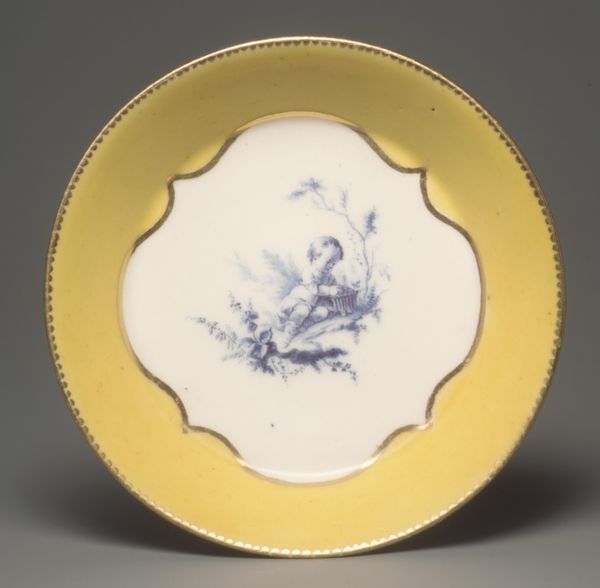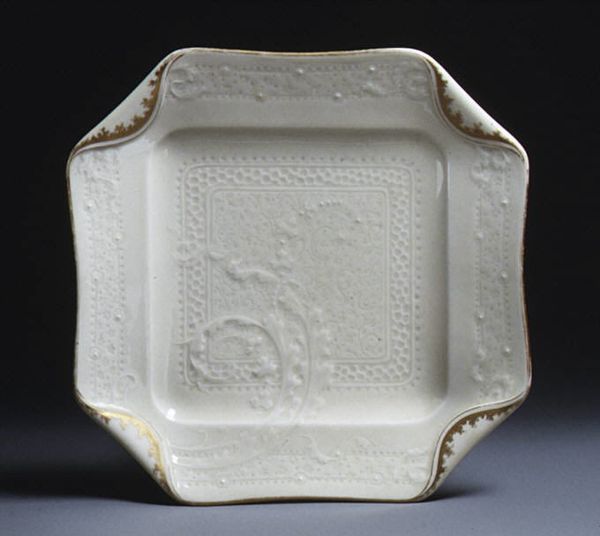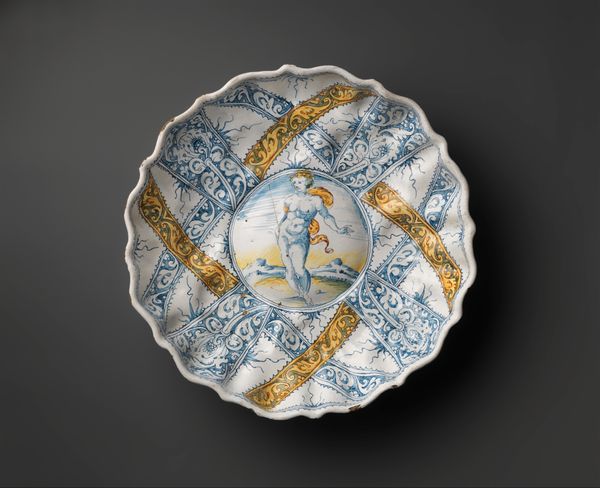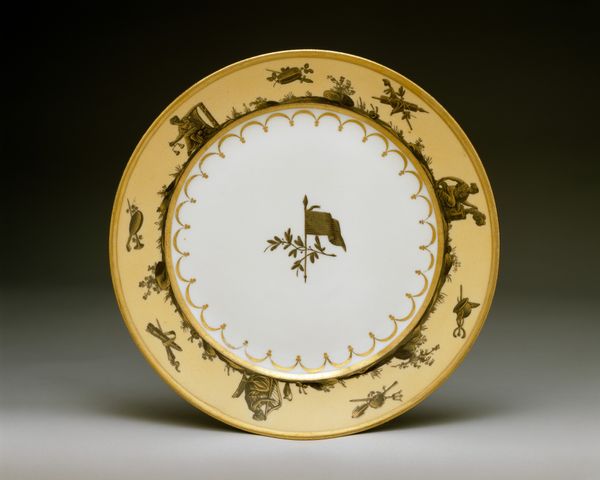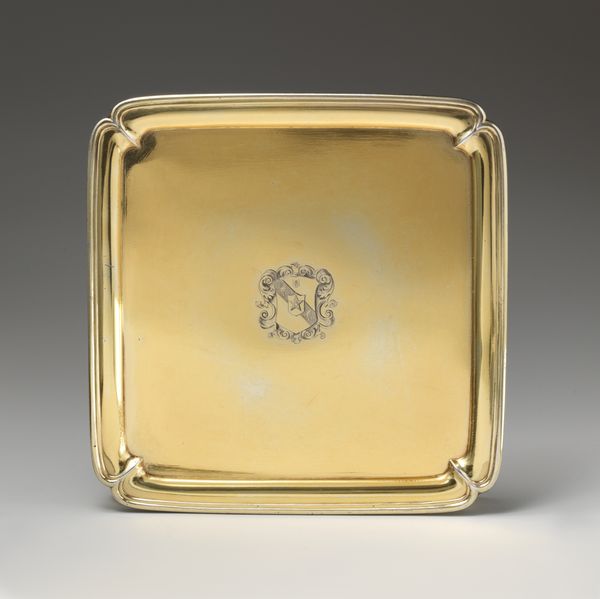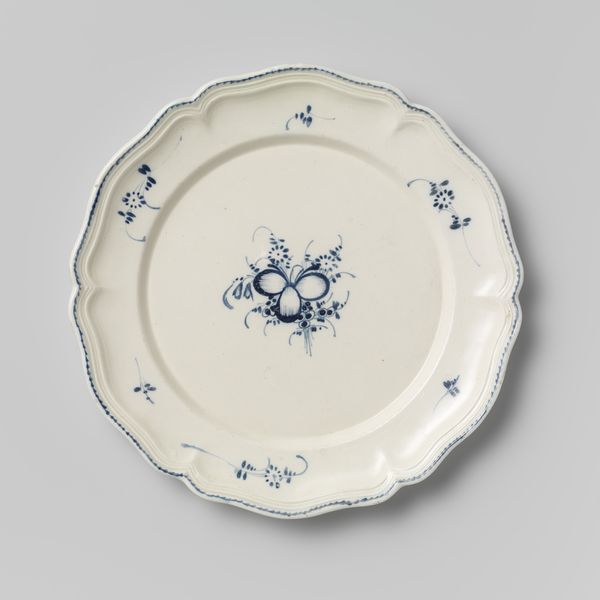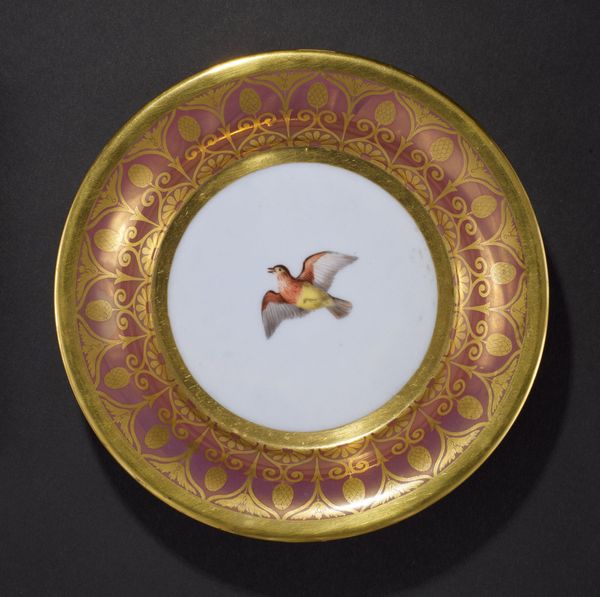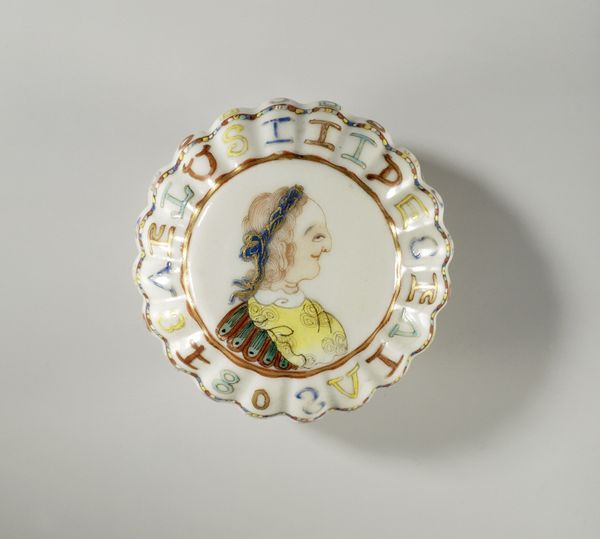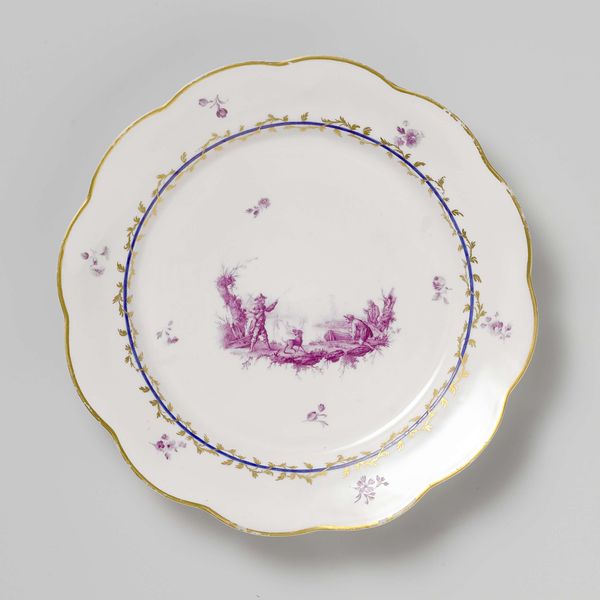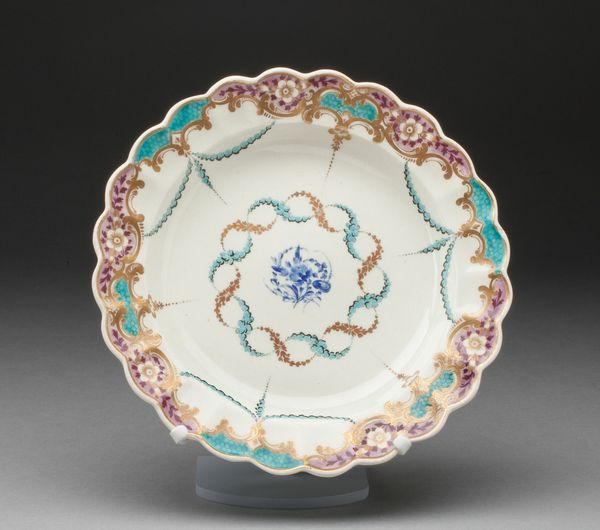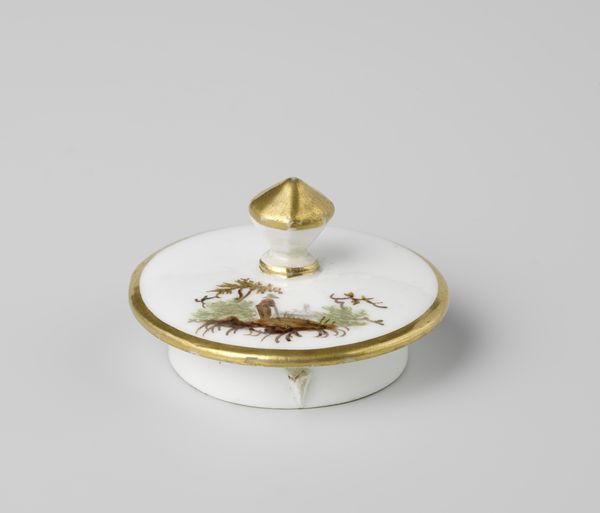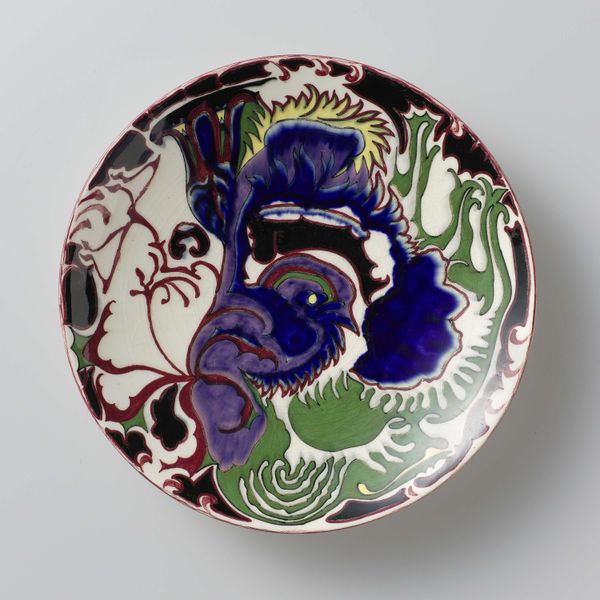
Dimensions: Overall: 1/16 × 8 × 8 in. (0.2 × 20.3 × 20.3 cm)
Copyright: Public Domain
Curator: Isn't it interesting how seemingly quotidian objects can hold so much social information? I find myself drawn to this porcelain Dish, dating from 1874-1884, made by Albert-Louis Dammouse. Its current home is the Metropolitan Museum of Art. Editor: My first thought? It looks…opulent. The gold trim really catches the eye. It makes me wonder about the labor that went into something that’s both functional and so ornate. Curator: Precisely. Dammouse was working in a period deeply impacted by shifting class structures, rising industrialization, and new patterns of consumption. Decorative arts like this often became accessible to an emergent bourgeoisie class, aspiring to the refinement previously enjoyed only by aristocratic elites. This particular object serves as a site for analyzing these negotiations around identity and taste. Editor: The materials tell a story, too. Porcelain wasn't just about beauty. It speaks to trade routes, the mining of specific clays, the labor involved in its production—from the initial form to the final painted detail. I'm also struck by how much it probably cost to create such an object, weighing this with its eventual function. It all impacts our perception of "value". Curator: Absolutely. The use of gold itself is a pointed statement. This era saw an influx of wealth into the hands of people who were looking to signal their arrival. It seems as though the gold accents served not just to decorate but to declare one’s affluence, performing the idea of luxury for viewers—and perhaps, even for themselves. We could consider that the very shape, too, the decorative-art Art-Nouveau aesthetic, may also reflect that moment in Western history and ideas about taste and beauty, in conjunction with political shifts. Editor: And don't forget about the function, however downplayed it might be in this iteration. At the end of the day, this *is* a dish, presumably made to contain food. Thinking about its context, what kinds of meals might it have held, who would have consumed them, and where was this taking place? A formal dining room? All these details contribute to our perception of both the artwork and its socio-economic role. Curator: By examining that interface, by unpacking both form and intended purpose, and bringing forward conversations that might illuminate intersectional perspectives of social class, consumption and status... Editor: …We come away seeing the material for more than its aesthetic value. This single Dish embodies processes, class structures, globalized production—a wealth of meanings contained in porcelain and gold.
Comments
No comments
Be the first to comment and join the conversation on the ultimate creative platform.
